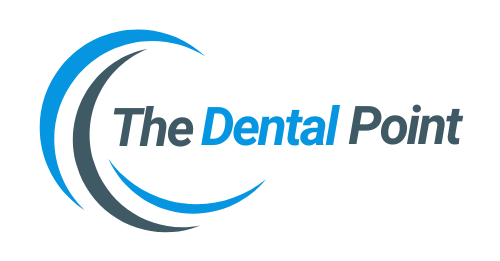Dental Website SEO Audit Checklist
Importance of SEO for Dental Practices: In the digital age, search engine optimization (SEO) is vital for dental practices looking to attract new patients and grow their businesses. With most patients turning to search engines to find dental services, having a well-optimized website can significantly enhance a practice’s online visibility, lead generation, and reputation.
Overview of SEO Audit Process
An SEO audit is a comprehensive analysis of a website’s strengths and weaknesses from an SEO perspective. It involves evaluating various factors that affect the site’s search engine rankings and identifying areas for improvement.
Goals of an SEO Audit
The primary goals of an SEO audit are to enhance a website’s search engine ranking, increase organic traffic, and ultimately convert more visitors into patients. By systematically reviewing and optimizing different SEO components, dental practices can ensure their online presence is strong and competitive.
Key Areas to Audit
On-Page SEO
Title Tags and Meta Descriptions
- Relevance to Keywords: Ensure title tags and meta descriptions are relevant to the targeted keywords to improve search visibility.
- Uniqueness: Each page should have unique title tags and meta descriptions to avoid content duplication issues.
- Length and Character Limits: Title tags should be between 50-60 characters, and meta descriptions should be around 150-160 characters to prevent truncation in search results.
Header Tags (H1, H2, etc.)
- Proper Hierarchy and Usage: Use header tags in a proper hierarchical order (H1 for main headings, H2 for subheadings, etc.) to improve content structure and readability.
- Keyword Optimization: Incorporate relevant keywords naturally into header tags to boost SEO performance.
URL Structure
- Keyword-Rich and User-Friendly URLs: Create URLs that include relevant keywords and are easy for users to read and remember.
- Consistency: Maintain a consistent URL structure across the website for better organization and navigation.
Image Optimization
- Alt Text with Relevant Keywords: Use descriptive alt text with appropriate keywords to help search engines understand the content of images.
- Compressed File Size: Optimize image file sizes to reduce load times without compromising quality.
- Proper File Naming: Name image files descriptively with keywords to improve SEO.
Content Quality and Quantity
- High-Quality, Informative Content: Ensure all content is valuable, informative, and well-written to engage and educate patients.
- Regular Blog Posts: Maintain a blog with regular, relevant posts to keep the site fresh and attract repeat visitors.
- Keyword Integration: Integrate relevant keywords naturally into the content to improve search engine rankings.
Mobile-Friendliness
- Responsive Design: Ensure the website is responsive and displays correctly on all devices, including smartphones and tablets.
- Fast Mobile Load Times: Optimize mobile load times to provide a seamless user experience for mobile visitors.
Technical SEO
Website Speed
- Page Load Time Optimization: Optimize page load times by reducing server response times, minimizing redirects, and leveraging browser caching.
- Image Optimization: Compress and properly size images to enhance loading speed.
- Minification and Caching: Minify CSS, JavaScript, and HTML files, and use caching to improve site speed.
XML Sitemap
- Creation and Submission to Search Engines: Create an XML sitemap and submit it to search engines to help them crawl and index the website efficiently.
- Regular Updates: Keep the XML sitemap updated with new content and changes to ensure accurate indexing.
Robots.txt
- Proper Configuration to Control Crawling: Configure the robots.txt file to control which pages search engines can crawl and index.
- Prevention of Indexing Unwanted Pages: Use the robots.txt file to prevent indexing of duplicate or irrelevant pages.
HTTPS
- Secure Website Connection: Implement HTTPS to secure the website and protect user data.
- Improved User Trust and SEO Benefits: Secure sites are trusted more by users and may receive a ranking boost from search engines.
Schema Markup
- Rich Snippets in Search Results: Use schema markup to create rich snippets that enhance the appearance of search results.
- Enhanced Visibility and Click-Through Rates: Implementing schema markup can improve visibility and increase click-through rates.
Off-Page SEO
Backlink Profile
- Quality and Quantity of Backlinks: Focus on acquiring high-quality backlinks from reputable sites to improve domain authority and search rankings.
- Diversity of Referring Domains: Ensure backlinks come from a diverse range of domains to demonstrate site credibility and relevance.
- Link Building Strategies: Engage in strategies like guest posting and outreach to build a robust backlink profile.
Local SEO
- Google My Business Optimization: Optimize the Google My Business profile with accurate, up-to-date information to enhance local search visibility.
- Local Citations and Directory Listings: Ensure consistent NAP (Name, Address, Phone Number) information across all local citations and directory listings.
- Review Management: Encourage and manage patient reviews to build a strong online reputation and trust.
SEO Tools for the Audit
Google Search Console
- Provides insights into site performance, indexing status, and search queries.
Google Analytics
- Offers detailed traffic analysis and user behavior insights.
Ahrefs
- Helps analyze backlinks, keywords, and competitor performance.
SEMrush
- Provides comprehensive SEO audit tools and keyword analysis.
Moz
- Offers tools for keyword research, link analysis, and on-page optimization.
Importance of Regular SEO Audits
Regular SEO audits are crucial for maintaining a high-performing website and staying ahead of competitors. They help identify and address issues that could negatively impact search engine rankings and user experience.
Key Takeaways from the Checklist
An effective dental website SEO audit should cover on-page, technical, and off-page SEO aspects. Focus on optimizing title tags, meta descriptions, header tags, URL structure, image alt text, website speed, XML sitemaps, robots.txt, HTTPS, schema markup, backlink profiles, and local SEO.
Additional Considerations
User Experience (UX)
- Easy Navigation: Ensure the website is easy to navigate with a clear, intuitive layout.
- Clear Calls to Action: Use prominent calls to action to guide visitors towards desired actions.
- Mobile-Friendly Design: Ensure the design is mobile-friendly to accommodate all users.
Voice Search Optimization
- Long-Tail Keywords and Natural Language: Optimize for long-tail keywords and natural language queries to improve voice search performance.
- Voice Assistant Compatibility: Ensure the website content is compatible with voice assistants to capture this growing search segment.
Local SEO for Dental Practices
- Google My Business Optimization: Continuously optimize the Google My Business profile for maximum local visibility.
- Local Citations and Directory Listings: Maintain consistent and accurate listings across all local directories.
- Review Management: Actively manage and respond to patient reviews to build a positive online reputation.







